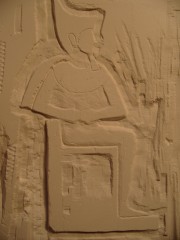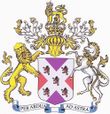Kingdom of Moylurg
Kingdom of Moylurg June 2009 - November 2010 | |
|---|---|
| Motto: Look for the Light | |
| Anthem: Protectors of the Earth | |
 Wilton and Salisbury, Wiltshire, Great Britain | |
| Capital and largest city | Wilton |
| Official languages | English, Moylurgian |
| Demonym(s) | Moylurgian |
| Government | Absolute Monarchy |
• King | Declan I |
| Establishment | Founded 11 June 2009 Empire of Moylurg 7 March 2010 Transitioned back to Kingdom April 2010 Transitioned to Wilcsland 10 November 2010 |
| Time zone | UTC |
The Kingdom of Moylurg was a nation located in Great Britain, the immediate predeccessor of the Kingdom of Wilcsland.
Ruled under an absolute monarchy, it was founded and ruled over by HM King Declan I. On 7 March 2010, it united with the Kingdom of the Taklamacan and the Kingdom of Corran, and so became the direct successor state of the Kingdom of South Bank, which had been founded in 2002.
Government
The Kingdom of Moylurg was an absolute monarchy - King Declan I held absolute executive, legislative, and judicial power, and could appoint co-rulers and grant titles at will. Moylurg was ruled under the same monarchy that had already ruled over South Bank and Atlantis and which currently rules over the Kingdom of Wilcsland.
History
The history of Moylurg is split into several periods of political power.
Old Kingdom
On 11 June 2009, King Declan I of the Taklamacan founded the Kingdom of Moylurg, and was proclaimed King. The Kingdom was also known as Deleckshum, and Declan I held both Emperor of Deleckshum and King of Moylurg as his titles. On 10 July 2009, Declan I appointed for the first time a co-monarch to rule alongside him. He gave Frances I the title Empress of Deleckshum, and she became his co-ruler.
Declan I began to rule more from Moylurg than from the Taklamacan - rather than the new nation becoming a vassal of the King's original nation, as had happened with the Kingdom of Thebes and the Kingdom of Saqqara, the opposite began to happen as Moylurg was given precedence before the Taklamacan.
First Intermediate Period
The First Intermediate Period of Moylurg's history was a period of several weeks during the summer of 2009 (lasting from the end of July and until the start of the Middle Kingdom) when few notable events happened in the Kingdom. The governance of the nation entered a stage of relative inactivity during this period.
Middle Kingdom
The Middle Kingdom is dated to begin from 11 September 2009, when Frances I (co-ruler of Declan I) was also granted the title Queen-Regent of Moylurg. King Declan I made the monarchy active in the nation again and the power of Moylurg returned. The wealth and land of the nation grew until Declan I assumed the throne of the Kingdom of Corran in October 2009, during the same month in which Frances I was removed from power after she left the Kingdom.
Second Intermediate Period
The Second Intermediate Period of Moylurg's history is marked by a large amount of political upheaval, and the near collapse of the wealth and power of the Kingdom, due to a movement arising which attempted to break away from Moylurg, resulting in arguments and political conflict. With the departure of Frances I, the name Deleckshum fell out of use and the Kingdom started to be known exclusively as Moylurg.
New Kingdom
The New Kingdom was a long period of wealth and an increase in the culture of Moylurg - soon, the Kingdom became rich again, and the King is known to have gained a lot from this. This wealth was channelled into national projects, and a writing system was created. It was around this time that the Kingdom of the Taklamacan and the Kingdom of Corran became Moylurgian Commonwealth Realms, establishing that Declan I regarded Moylurg as his foremost nation.
Third Intermediate period
Even less is known about the Third Intermediate Period of Moylurg's history than its Second - all that is known is that it was the longest intermediate period so far, and so using dates can be calculated to have started some time during early December 2009. It is assumed that this was a period of political instability during which the nation lost large amounts of power and wealth.
Golden Period
The Golden Period of Moylurg's history started on 9 February 2010 with the declaration of Laura I to be the new Queen-Regent, ruling alongside Declan I. The Kingdom of Moylurg began to open diplomatic relations with over nations, some of them overseas - on 10 February, the two monarchs opened diplomatic relations with the Zonian Confederacy, and the day afterwards agreed to relations with the Kingdom of Angador. On 24 February, Moylurg signed its first formally written treaty of mutual recognition, with the Federal Republic of St.Charlie.
On 7 March 2010, Declan I joined Moylurg, the Kingdom of the Taklamacan, the Kingdom of Corran, and the small Kingdom of Midway Hills in political union, creating the Empire of Moylurg. The following month, the Empire was renamed back to a Kingdom, but this new, much larger Moylurg was now a direct successor state of the Taklamacan and therefore of the King's first nation, South Bank, which had been founded in May 2002.
The Golden Period is considered to have ended with the removal from power of Laura I on 1 May 2010, after she spoke to Declan I in a way that he considered to be unacceptable.
Fourth Intermediate Period
The Fourth Intermediate Period of Moylurg's history is its final one. Starting at roughly the same time that Laura I was removed from power, Declan I began to focus more on foreign than on domestic affairs, and started to become inactive in governing Moylurg itself. Moylurg entered into an alliance with the Empire of Austenasia and diplomatic relations with the rest of the Carshalton Sector, but the population began to decrease, and King Declan's power with it. Declan I raised taxes to get materials for a new capital of Moylurg, and ordered a pottery to be built to create new objects for the kingdom.
The population began to rise again but the nation was still not as stable as it had been before. On 19 October 2010, Jonathan I was declared to be King alongside Declan I, although in practise the power of Jonathan I was merely titular. The end of the reign of Jonathan I marked the end of the Kingdom of Moylurg - despite the best efforts of Declan I to restore the strength and creativity of Moylurg, an assembly of its population decided that more thorough reforms were needed: Jonathan I was deposed by the people as a foreigner, and they declared the founding of the Kingdom of Wilcsland.
Culture
Moylurg had a culture very similar to that of the Kingdom of Kemet (Ancient Egypt) and the Kingdom of Meroe. It welcomed and respected all religions, and was known for being artistic and creative, often creating art for national projects.
The Royal Flail
The Royal Flail is an object from Ancient Egyptian culture. It was adopted by South Bank in 2002, and was used in Moylurg as a symbol of royal power.
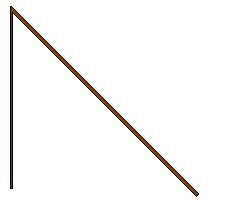
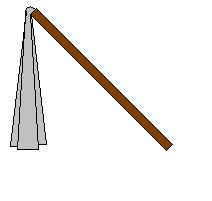
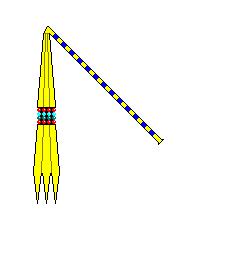
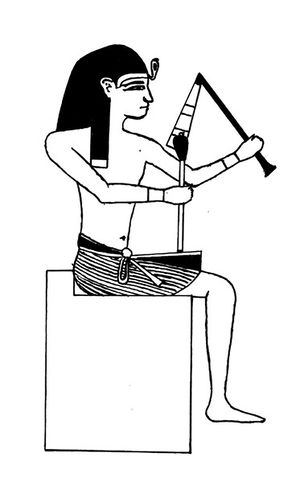
Writing Systems
South Bank, Atlantis, and the Taklamacan had all used hieroglyphic writing systems over their histories. Similarly, Moylurg had two main (hieroglyphic) writing systems created over its history:
Deleckshum Hieroglyphs
This is the oldest set of hieroglyphs from the history of Moylurg (including the aforementioned writing systems of the previous nations) that still have known existing examples. The most notable example is a large lump of slate with glyphs on one face of it found in the Deleckshumite Pyramid in July 2010 - known as the Glyph Stone, it was found within the grounds of one of the Royal Houses in Wilton, but was lost in May 2011 (although photographs of the Stone remain). Some paper examples were also known to exist in the historical records, but these were lost during the Fourth Intermediate Period. It is possible that a piece of paper may exist featuring Deleckshum Hieroglyphs alongside an English translation, but unless this document is found, the meaning of the Deleckshumite writing system is lost to time.
Moylurgian Hieroglyphs
These hieroglyphics were used in the Kingdom of Moylurg from the New Kingdom onwards. They were further developed during the Fourth Intermediate Period, and despite the decrease of political activity in Moylurg itself, due to the huge emphasis placed on foreign affairs during that time period the writing system spread to the Carshalton Nations, and during 2011-12 was used more in the Empire of Austenasia than in the Kingdom of Wilcsland, Moylurg's successor state. There are glyphs representing letters and some words, and Ancient Egyptian numerals are used for numbering.
Art of Moylurg
The art of the Kingdom of Moylurg was created over a long period and used the Ancient Egyptian culture for inspiration. Moylurg's art can be found on paper, wood, metal, or even stone.
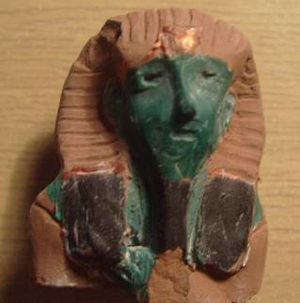
Moylurg over its history created small statues in the image of the monarch or other subjects. These were made of clay or local chalk - the chalk statuettes were carved with small stone and metal tools. These statues were placed around the kingdoms, and were originally placed on altars made of piles of stones. Some were painted with bright colours, while others would be left the stones natural colour. Another type of art that Moylurg made were reliefs of monarchs, which were cut into stone or plaster and painted.
